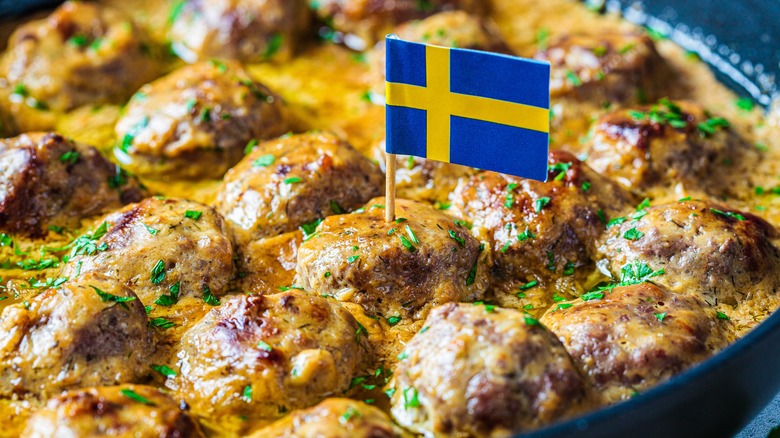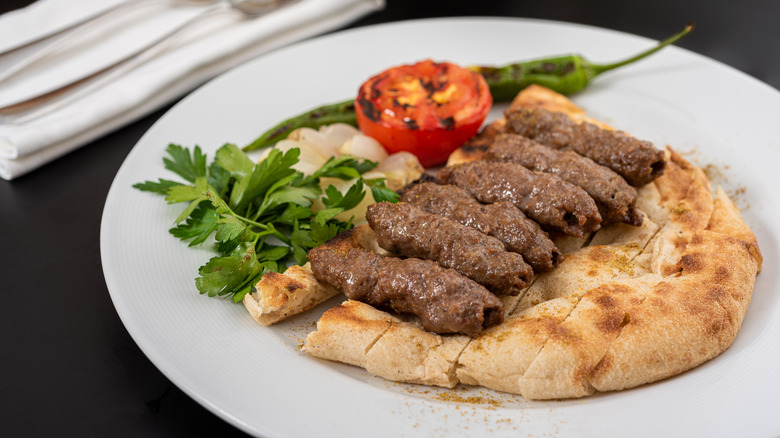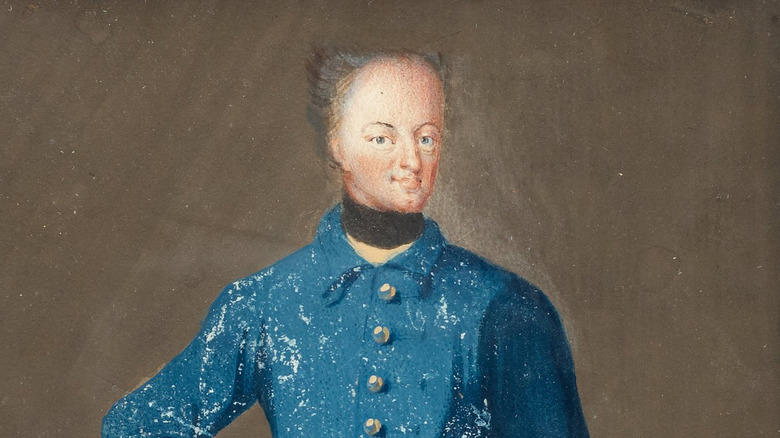It Turns Out Swedish Meatballs Aren't Actually From Sweden
In April 2018, the official Twitter account of the Swedish government issued a statement that sent shockwaves throughout the Scandinavian country. Swedish meatballs, they said, were not originally from Sweden at all, but rather based on a recipe that the 18th-century monarch Charles XII encountered while visiting Turkey. There seemed to be no rhyme or reason as to why Swedish officials decided to break the nation's hearts that day, but the tweet launched an internet furor. Newsweek reports that Serdar Cam, president of the Turkish Cooperation and Coordination Agency, a branch of the Turkish government, even launched a war of words with IKEA suggesting that the furniture store should stop selling its famed Swedish meatballs in light of the revelation.
Perhaps it's unwise for any nation to cling too closely to its meatballs, as a brief glance around the culinary internet reveals that almost every culture enjoys some version of these protein-packed spheres. Serious Eats lists 20 unique regional versions of meatballs, including Romanian chiftele, Danish frikadeller, and Indonesian bakso alongside the better-known Swedish meatball (a.k.a. kötbullar) and Italian (a.k.a. polpette) varieties. The Turkish version that appears to have inspired the Swedes is known as cig köfte, but these cannot claim to be the original meatballs either. With that in mind, let's take a trip through the delicious history of meatballs and see how they made their way to Sweden, and the rest of the world at large.
The first meatballs weren't round
If you thought the news that Swedish meatballs aren't originally Swedish was shocking, get a load of this: The earliest meatballs weren't even shaped like balls. According to The Atlantic, it's widely believed that all the world's meatballs evolved from a Persian dish called kofta. Kofta are made by mixing ground or minced meat (typically beef, chicken, pork, or lamb) with a grain such as rice, bulgur, or lentils, and they are shaped like a cylinder. The first people to adopt the meatball concept from Persia were the Arabs, who may deserve credit for the 'ball' aspect of the dish. Versions of kofta appear in some of the earliest known Arabic cookbooks, which instruct cooks to shape ground lamb into spheres the size of oranges and glaze them with egg yolk and saffron.
Meatballs spread to other ancient societies in Greece, Spain, and North Africa along trade routes from the Arab world. Today, the Spanish still enjoy their own version, known as albondigas, while Moroccan kefta remain a hallmark of North African cuisine. However, few people had more love for the dish than the Turks.
Serious Eats reports that there are over 200 different varieties of köfte made throughout Turkey, incorporating a wide array of ingredients and cooking methods (one version: cig köfte, is even served raw). Being a bridge between continents, Turkey appears to have been the meatball's gateway to Europe. This is certainly true in the case of Sweden.
Bringing meatballs to Sweden
Charles XII assumed the Swedish throne in 1697 at the tender age of 15, and 10 years into his rule, launched a military invasion of Russia (via Britannica). Anyone with a cursory knowledge of European history will know that invading Russia is always a terrible idea, and sure enough, the Swedish military received a thorough thrashing that greatly diminished the country's international power. However, this military defeat was instrumental in bringing meatballs to Scandinavia. According to Atlas Obscura, after leading his troops to defeat in 1709, Charles XII fled to the Ottoman Empire to ask Sultan Ahmed III to join his war against Russia. He ultimately spent five years in Ottoman lands, including substantial time in Constantinople, where he reportedly grew quite fond of the local cuisine.
One of the Ottoman dishes that Charles XII fell for was köfte, and he brought word of it with him when he returned to Sweden in 1714. His homecoming was brief, as a mere four years later he would be killed while attempting to invade Denmark. Not long after, a Swedish cook named Casja Warg who had worked for friends of the late monarch released a cookbook containing a recipe for kötbullar (Swedish meatballs). According to the BBC, this was not the only food that Charles XII brought back from the Ottoman Empire either. Coffee and stuffed cabbage, both wildly popular in Sweden, can both be traced back to his time in Turkey.


